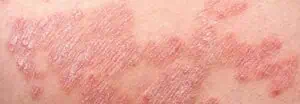WHEN SHOULD I WORRY ABOUT A MOLE?
A mole is a coloured spot on the skin which is made up of a cluster of cells known as melanocytes which are responsible for producing the pigment in your skin. Sometimes these melanocytes grow in a cluster instead of being spread out which results in the formation of a mole. Moles are usually harmless, but these small dark spots on the skin can sometimes develop into a type of skin cancer known as melanoma. Examining and regularly monitoring moles saves lives as there is a 100% chance of survival of melanoma skin cancer if caught and treated early enough. If left to develop and evolve, melanoma can become fatal which is why it is so important to keep a close eye on your moles and see a Doctor to review your moles if you notice a change or anything unusual.
How Can Moles Cause Problems?
Generally, moles are harmless, but they can sometimes develop abnormalities that make them grow and divide more than normal and can then become cancerous. These abnormalities are often triggered by sun damage. Melanoma is one of the more serious types of skin cancer because it is more likely to grow quickly and has the propensity to spread to other parts of the body. It is therefore vital to spot the signs of melanoma as soon as possible so that it can be removed early.
How to Check Moles for Skin Cancer?
It is a good idea to check your moles once a month, especially if you have lots of moles or freckles (particularly if some are large), have fair hair or skin, use sunbeds or have a family history of skin cancer. When checking your moles, it is a good idea to use both a full length and a hand held mirror so you are able to check your body all over. Stand in a well lit room and ask a family member or your partner to help you check the hard to reach areas. Don’t forget to check less obvious places such as your scalp, the soles of your feet and in between your fingers and toes. It is a good idea to take photos of your moles so you can keep track of any changes. If you do notice any changes, consult a dermatologist.
Signs of Skin Cancer in Moles
Moles can look very different to each other which can make it hard to identify moles which may be worrying, the key thing you are looking for is if your mole is changing. When checking your body for moles, you are looking for any changes to the size, colour of shape. You are also looking for itching, bleeding or crusting of moles which are signs you need to book an appointment to get your moles checked by a consultant dermatologist. When checking for moles, know your ABCDEs and get your moles professional checked if:
- A Asymmetry – one half doesn’t match the other half
- B Borders – the mole has uneven borders
- C Colour – there is a variety of colours in the mole (brown, tan or black)
- D Diameter – the mole grows larger than a pencil eraser (¼ inch)
- E Evolution – the mole evolves in size, shape, colour, elevation or there is a new characteristic
By checking your moles regularly and becoming familiar with your moles, you will be able to detect any changes in them early and get them seen by a specialist so treatment can begin if required.
Other Risk Factors for Melanoma Skin Cancer
Anyone can be affected by skin cancer, but you are more likely to develop melanoma if:
- You have lots of moles (more than about 50), as melanoma is more likely to develop within moles
- Lots of your moles are unusual looking (e.g. asymmetric or irregular shaped)
- You have a fair complexion that burns very easily in the sun
- You spend a lot of time outdoors in the sun
- You’ve had sunburn or tanned a lot in the past
- You’ve used sunbeds in the past
- You don’t regularly use sunscreen or other forms of sun protection
- Another member or members of your family has/have been affected by melanoma, particularly at a young age
If any of these factors apply to you, you should be particularly careful to protect yourself from the sun and to check your moles regularly.
Find out more about Moles Treatments?
If you’re concerned about a mole and want expert guidance, we’re here to assist you. The expertise and qualifications held by our consultants allow us to offer the highest quality private dermatology consultations, treatments and skin surgery.

Find out more about Moles Treatments?

When to See a Doctor About a Mole?
If you notice any suspicious changes in a mole, such as the ones outlined, you should see a doctor as soon as possible. The dermatologist will make a detailed assessment of your worrying mole and either identify it as benign, or recommend for it to be removed. Once the mole has been removed, it will be tested in the lab to confirm whether it was cancerous and that all of the cancer cells have been removed. Sometimes, additional treatment will be required to eliminate any remaining cancer cells. In a small number of cases, the cancer will have spread to other parts of the body before it was detected. At this point, further treatment options will be discussed with you.
If you have concerns about your moles, book a consultation with a dermatologist. A mole check can be hugely reassuring and is an opportunity to get professional advice on how to check your moles and protect your skin. If you are unsure you are checking your moles properly, consultant dermatologists offer a mole mapping service, whereby your moles are imaged using cutting edge skin imaging technology. You will be provided with a record of your mole map and the digital images will be securely stored for future reference. The ability to compare images and identify change makes it a highly accurate tool in the development of skin cancer. If you would like to learn more about mole mapping, please get in touch.
Noticing that one of your moles is changing can be worrying, but it is important to remember that most moles won’t cause any problems and most people won’t be affected by skin cancer. It is important to take steps to protect yourself, check your moles regularly and make sure that you’re protecting yourself from sun damage as this can increase the risk of skin cancer.




